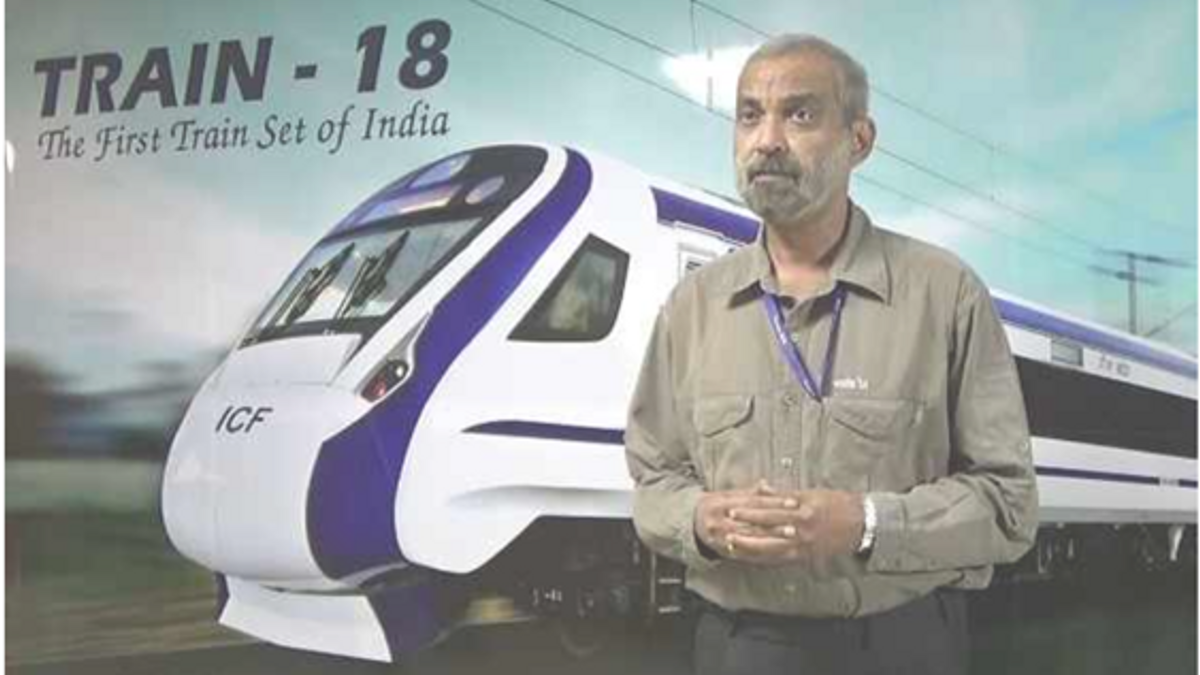
Vande Bharat: A Feather in Railway’s Cap
Vande-Bharat Train, a Semi-High Speed Train from the global point of view, has been running since 2019. It has touched an average speed of 130 Km per hour with peaks touching 180 Kmph with high acceleration of 0-100 Kmph in less than a minute. The design Speed capability is 250 Kmph if the track is improved with stray-animal’s/pedestrian collision risk eliminated. It has been designed and developed within India by Integral Coach Factory (ICF) Chennai by the innovative mind of Mr Sudhanshu Mani along with his dynamic team in the last leg of his service. The team under Mr Mani did wonders in that from conceptualising to roll out the train for the trials in 18 months (in 2016-18 period), at a frugal outlay of Rs 100 Cr was a record of some sorts. Both developmental and manufacturing costs are nearly one-third of the other trains of a similar class. The trials had been demanding on the not-so-good unprotected tracks but successful.
The train also nicknamed Train-18, besides being High Speed and High Acceleration, is high on passenger Comforts, Aesthetic design, Energy Efficient, Modular Design, Low Cost of Maintenance & Operation as well as Operating both ways without the need for Engine reversals. The then Railway minister only facilitated the in-house R&D to remove the bureaucratic and other hurdles. Following a successful trial, the first set of the Vande Bharat Train was introduced on New Delhi – Varanasi section of the Indian Railway in Feb, 2019. Thereafter, several other sections have been linked by this prestigious train while design inputs and feedback of the operations are being incorporated. As a result, Vande Bharat 2.0 is already on track, in full operation.
An improved Vande Bharat 2.0 train is now being rolled out, that weighs 25 tons less and has several new features. It has Wi-Fi on-demand, every coach has wide view windows, two 32″ CCTV screens providing passenger information and infotainment, will the ACs 15 per cent more energy efficient. With dust-free clean air cooling of the traction motor and a photo-catalytic ultraviolet air purification system installed in the Roof-Mounted Package Unit (RMPU); travel will become more comfortable. It has an extra safety feature of an indigenously developed Train Collision Avoidance System – KAVACH.
Vande Bharat is certainly slower than many of the bullet trains around the world, some of which cruise at terrific speeds in access of 300 Kmph. However, those nations have been running those high speed trains for decades, on specially protected streamlined and perfectly aligned tracks that do not give jerks even at such high speeds and where stray animals cannot pose a collision threat. Collisions at such speeds can be catastrophic. Despite the protected tracks and running experiences, there have been several accidents of High Speed Trains in those countries.
India under Modi Govt has taken recourse to Atmnirbhar plans in which Vande Bharat surely has a bright future. It serves the imaginations of the people, reduces travel time by half, cuts the import cost, boosts the Indian economy and takes the nation to a new age. Ministry of Railway plans to have about 450 trains manufactured and rolled out in the next few years. There have been a couple of incidents in which stray cattle grazing in the open have been hit that have also damaged the nose-cone of the train. So long as the tracks are not protected through secured wire fencing, such incidents may continue. The designers of the nose cone may opt to have an impact guard in front of the nose cone. We, the nationals must also do our bit to avoid leaving our cattle unguarded in the vicinities of the high speed rail tracks to prevent such incidences.
